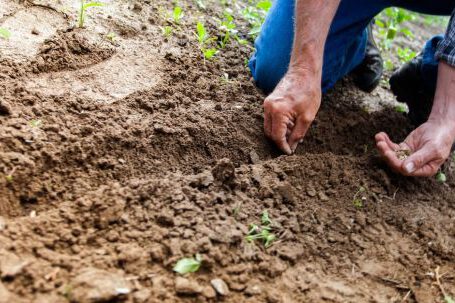Gardening is a rewarding and fulfilling hobby that allows us to connect with nature and create beautiful landscapes. However, adverse weather conditions can pose a threat to our beloved plants. Whether it’s a sudden frost, scorching heat, or heavy rainfall, it’s essential to take measures to protect our plants and ensure their survival. In this article, we will explore some effective ways to safeguard plants during harsh weather.
Choose Resilient Plant Varieties
One of the best ways to protect your plants from extreme weather conditions is to choose resilient plant varieties. These plants are specifically bred to withstand challenging environments and are more likely to survive adverse weather. Research and select plants that are known for their ability to tolerate extreme temperatures, strong winds, and heavy rainfall.
Provide Adequate Mulching
Mulching is an effective technique to protect plants from both cold and hot weather. During winter, a layer of mulch around the base of the plant acts as insulation, preventing the soil from freezing and protecting the roots. In the summer, mulch helps retain moisture, keeping the soil cool and reducing evaporation. Apply a thick layer of organic mulch, such as wood chips or straw, around your plants to provide them with the necessary protection.
Cover Plants during Frost
Frost can be particularly damaging to plants, especially those that are frost-sensitive. To protect your plants from frost, cover them with a frost cloth or a bedsheet. These covers act as a barrier, trapping the heat radiating from the ground and preventing it from escaping. It’s crucial to cover the plants before the temperature drops and remove the cover during the day to allow sunlight in.
Provide Shade during Heatwaves
Excessive heat can cause irreversible damage to plants, especially those that are not accustomed to high temperatures. To protect your plants during a heatwave, provide them with shade. You can use shade cloth, umbrellas, or even create temporary structures using bamboo or fabric. Position the shade in a way that it blocks the direct sunlight while still allowing airflow.
Water Properly
Proper watering is essential for the health and survival of plants, especially during harsh weather conditions. During hot and dry periods, water your plants deeply and less frequently to encourage deep root growth. Avoid watering the leaves, as this can lead to water loss and increase the risk of fungal diseases. In contrast, during heavy rainfall, ensure proper drainage to prevent waterlogging, which can suffocate the roots.
Prune and Stake Plants
Pruning and staking your plants can help them withstand harsh weather conditions. Regular pruning promotes healthy growth and removes weak or damaged branches that are more susceptible to breaking during storms. Staking provides support to plants, preventing them from bending or breaking under the weight of heavy rain or snow.
Monitor and Treat for Pests and Diseases
Harsh weather conditions can weaken plants and make them more vulnerable to pests and diseases. It’s crucial to regularly monitor your plants for signs of infestation or disease and take immediate action. Use organic pest control methods whenever possible to minimize the impact on the environment.
Conclusion: Protect Your Plants, Ensure Their Survival
As gardeners, it’s our responsibility to protect our plants and ensure their survival, even in the face of harsh weather conditions. By selecting resilient plant varieties, providing adequate mulching, covering plants during frost, providing shade during heatwaves, watering properly, pruning and staking, and monitoring for pests and diseases, we can safeguard our plants and enjoy thriving gardens all year round. Remember, a little extra care goes a long way in protecting and preserving the beauty of our gardens.





